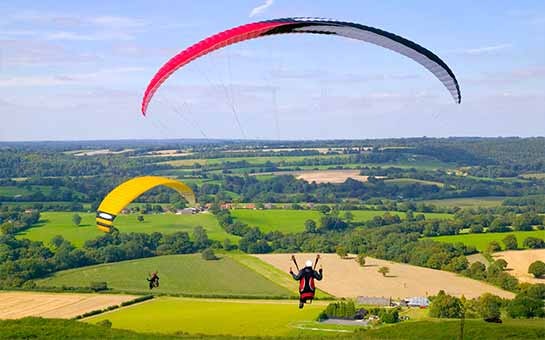Travel Insurance for Paragliding
Paragliding travel insurance is a necessity for anyone who will be participating in paragliding.
Many travel insurance plans exclude hazardous sports such as paragliding. Therefore, it is important to purchase a travel insurance plan that would cover such activities. Some travel insurance plans have different levels of coverage for different sports activities. Make sure to purchase the right level of hazardous sports insurance that would include paragliding.
If you get injured while paragliding, you may need to be evacuated to the nearest hospital where adequate care can be given. In this case, you will need a travel insurance plan that covers emergency medical evacuation. You may also need coverage for immediate medical treatment, such as surgery, and rehabilitation or physical therapy.
A European Health Insurance Card (EHIC) does not provide enough coverage. You will need a separate travel insurance plan that covers paragliding.
Purchasing adventure travel insurance with adequate coverage for paragliding can remove anxiety and concerns so you will be free to enjoy the sport and have a great time while flying through the sky like a bird.
The Basics of Paragliding
Paragliding is an air sport where the pilot comes as close to flying as possible using a foot-launched aircraft to fly freely downwards from a hill or mountaintop.
The thrill of flying at a great height above the ground and enjoying the scenery below is simply fantastic.
The pilot sits in a harness that is suspended below the aircraft's fabric wing. The shape of the wing is formed by air entering vents in the front of the wing and its suspension lines.
The pilot usually carries a Radio, Variometer and GPS system. Appropriate clothing is essential for paragliding. You will need a windproof and waterproof jacket. Instead of heavy clothes, consider wearing several layers of light clothing. Alternatively, you could wear one ski suit. Additionally, wear a back protector to avoid spinal injuries.
Risks of Paragliding
Paragliding is considered an extremely hazardous sport.
Safety of paragliding directly depends on the skill and sense of the pilot. However, the risks substantially increase when paragliding in a foreign country due to unfamiliarity with the climate and the area. Paragliding may result in serious or fatal injuries.
During strong winds or a difficult landing, paragliding may result in fractures, strains, broken bones or ankles. It is important to note that legs and feet are usually unprotected when paragliding. Any other parts of the body may receive cuts and bruises as well.
Pilots should not fly at sites that are too challenging for their skills, or in turbulent weather conditions. Also, pilots must adhere to all restrictions set by instructors and more experienced pilots.

